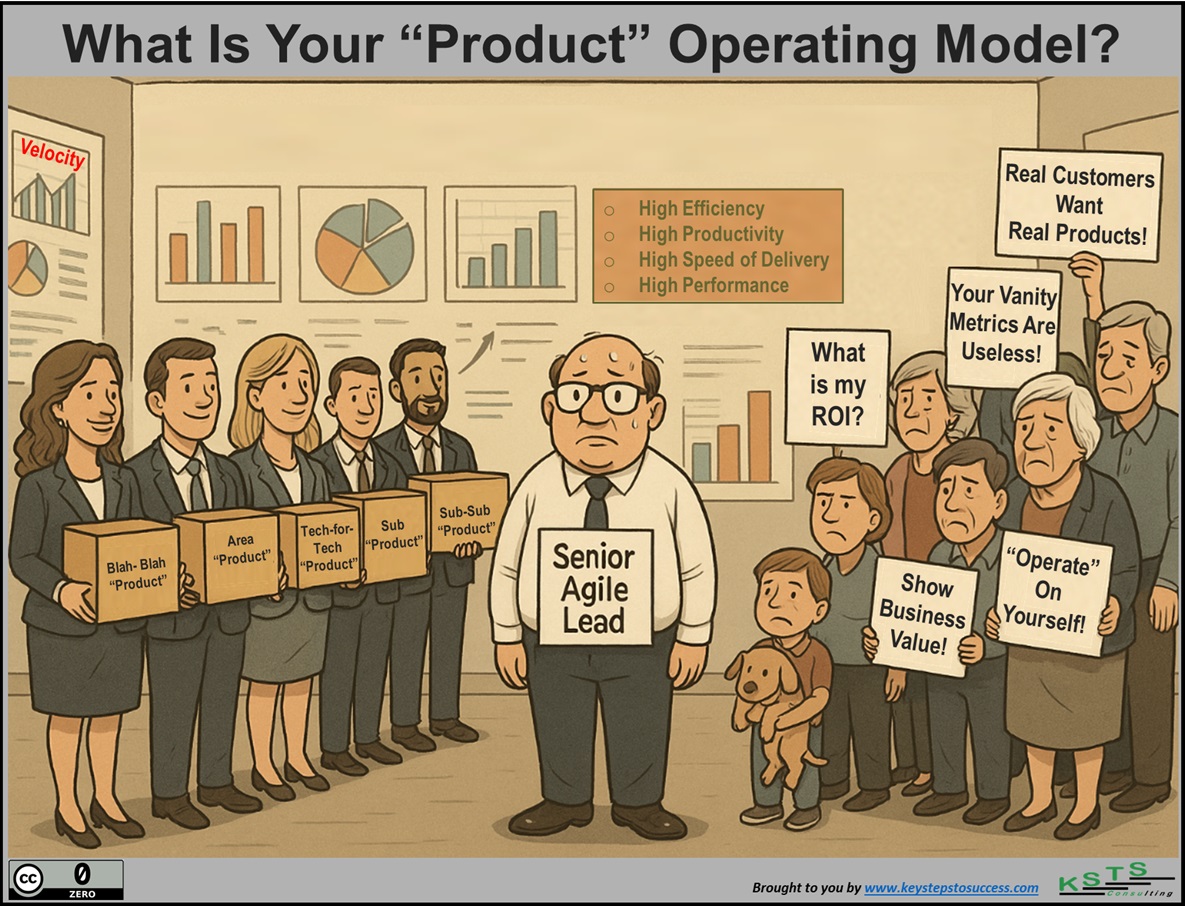What Is Your “Product” Operating Model?

What is your “Product” Operating Model?
Analogy: Your Restaurant Experience
By way of analogy, imagine you come to a restaurant and willing to spend a lot of money on a bowl of an expensive and exotic soup. You sit at a table and wait for your dish to be delivered. When a waiter comes, you see that on his tray, there are raw ingredients that are used to prepare a soup, but there is no actual soup. You are puzzled. This is not what you are prepared to pay for. Each ingredient, although the required constituent of a final product, is not a product in itself. Even if a waiter, head chef and restaurant owner tried to explain to you that ingredients also cost money, and are [raw] products on their own, you still have a strong reason to be unhappy, as you were willing to pay your money for something that you could consume immediately upon delivery: a delicious, exotic soup. As a customer, if you do not receive what you paid for, you would be unhappy an, probably, ask for your money back, and not come to this restaurant ever again.

 by
by  by
by 
 by
by  by
by